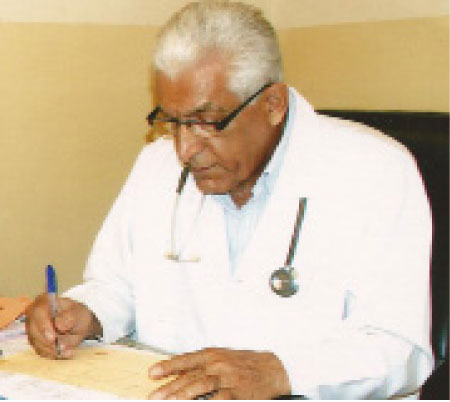
The following are risk factors for breast cancer:
·Age: The chances of breast cancer increase as you get older.
·Family history: The risk of breast cancer is higher among women who have relatives with the disease. Having a close relative with the disease (sister, mother, or daughter) doubles a woman’s risk.
·Personal history: Having been diagnosed with breast cancer in one breast increases the risk of cancer in the other breast or the chance of an additional cancer in the original breast.
·Inherited genetic risks: Certain inherited genes are associated with a significantly increased risk of breast and other cancers.
·Women diagnosed with certain not caner breast conditions have an increased risk of breast cancer. These include atypical hyperplasia, a condition in which there is abnormal proliferation of breast cells but no cancer has developed.
·Menstruation: Women who started their menstrual cycle at a younger age (before 12) or went through menopause later (after 55) have a slightly increased risk.
·Breast tissue: Women with dense tissues have a higher risk of breast cancer.
· Race: White women have a higher risk of developing breast cancer, but African-American women tend to have more aggressive tumours when they do develop breast cancer.
· Having no children or the first child after age 30 increases the risk of breast cancer.
·Breastfeeding for 1 year or more over a woman’s lifetime has been shown to lower the risk of breast cancer. Breastfeeding for a shorter time period may slightly lower the risk.
·Being overweight or obese increases the risk of breast cancer.
·Use of oral contraceptives in the last 10 years slightly increases the risk of breast cancer.
·Using combined hormone therapy after menopause increases the risk of breast cancer.
·Alcohol use increases the risk of breast cancer, and this seems to be proportional to the amount of alcohol used.
·Exercise seems to slightly lower the risk of breast cancer in postmenopausal women.
·There is a relationship between diet and breast cancer, including an increased risk with a high fat diet, alcohol intake, and obesity related to higher cholesterol levels. Dietary iodine deficiency may also play a role.
Lifestyle
Smoking tobacco appears to increase the risk of breast cancer, with the greater the amount smoked and the earlier in life that smoking began, the higher the risk. In those who are long-term smokers, the risk is increased 35% to 50%. A lack of physical activity has been linked to ~10% of cases.
What is breast cancer?
Breast cancer is when cancer develops from breast tissue. Signs of breast cancer may include a lump in the breast, a change in breast shape, dimpling of the skin, fluid coming from the nipple, or a red scaly patch of skin. In those with distant spread of the disease, there may be bone pain, swollen lymph nodes, shortness of breath, or yellow skin.
Risk factors for developing breast cancer include obesity, lack of physical exercise, drinking alcohol, hormone replacement therapy during menopause, ionizing radiation, early age at first menstruation, and having children late or not at all. About 5–10% of cases are due to genes inherited from a person’s parents among others. Breast cancer most commonly develops in cells from the lining of milk and the lobules that supply the ducts with milk. In addition, there are more than 18 other sub-types of breast cancer. The diagnosis of breast cancer is confirmed by taking a sampling of the concerning lump. Once the diagnosis is made, further tests are done to determine if the cancer has spread beyond the breast and which treatments it may respond to.
Outcomes for breast cancer vary depending on the cancer type, extent of disease, and person’s age. Survival rates in the developed world are high, with between 80% and 90% of those in England and the United States alive for at least 5 years. In developing countries survival rates are poorer. Worldwide, breast cancer is the leading type of cancer in women, accounting for 25% of all cases. In 2012 it resulted in 1.68 million cases and 522,000 deaths. It is more common in developed countries and is more than 100 times more common in women than in men.
Signs and symptoms
Early signs of possible breast cancer
Breast cancer showing an inverted nipple, lump and skin dimpling.
The first noticeable symptom of breast cancer is typically a lump that feels different from the rest of the breast tissue. More than 80% of breast cancer cases are discovered when the woman feels a lump. The earliest breast cancers are detected by a mammogram. Lumps found in lymph nodes located in the armpit. can also indicate breast cancer.
Indications of breast cancer other than a lump may include thickening different from the other breast tissue, one breast becoming larger or lower, a nipple changing position or shape or becoming inverted, skin puckering or dimpling, a rash on or around a nipple, discharge from nipple/s, constant pain in part of the breast or armpit, and swelling beneath the armpit or around the collarbone. Pain is an unreliable tool in determining the presence or absence of breast cancer, but may be indicative of other breast health issues.
Inflammatory breast cancer is a particular type of breast cancer which can pose a substantial diagnostic challenge. Symptoms may resemble a breast inflammation and may include itching, pain, swelling, nipple inversion, warmth and redness throughout the breast as inflammatory breast cancer doesn’t show as a lump there’s sometimes a delay in diagnosis.
Symptoms complex of breast cancer is Paget’s disease of the breast. This syndrome presents as skin changes resembling eczema, such as redness, discoloration, or mild flaking of the nipple skin. As Paget’s disease of the breast advances, symptoms may include tingling, itching, increased sensitivity, burning, and pain. There may also be discharge from the nipple. Approximately half of women diagnosed with Paget’s disease of the breast also have a lump in the breast.
Occasionally, breast cancer presents as metastatic disease—that is, cancer that has spread beyond the original organ. The symptoms caused by metastatic will depend on the location of metastasis. Common sites of metastasis include bone, liver, lung and brain. Unexplained weight loss can occasionally herald an occult breast cancer, as can symptoms of fevers or chills. Bone or joint pains can sometimes be manifestations of metastatic breast cancer, as can jaundice or neurological symptoms. These symptoms are called non-specific, meaning they could be manifestations of many other illnesses.
Most symptoms of breast disorders, including most lumps, do not turn out to represent underlying breast cancer. Fewer than 20% of lumps, for example, are cancerous, and benign breast diseases such as mastitis of the breast are more common causes of breast disorder symptoms. Nevertheless, the appearance of a new symptom should be taken seriously by both patients and their doctors, because of the possibility of an underlying breast cancer at almost any age.
Genetics
Some genetic susceptibility may play a minor role in most cases Overall; however, genetics is believed to be the primary cause of 5–10% of all cases. In those with zero, one or two affected relatives, the risk of breast cancer before the age of 80 is 7.8%, 13.3%, and 21.1% with a subsequent mortality from the disease of 2.3%, 4.2%, and 7.6% respectively. In those with a first degree relative with the disease the risk of breast cancer between the age of 40 and 50 is double that of the general population.
Diagnosis
Most types of breast cancer are easy to diagnose by microscopic analysis of a sample—of the affected area of the breast. There are, however, rarer types of breast cancer that require specialized lab exams.
The two most commonly used screening methods, physical examination of the breasts by a healthcare provider and mammography, can offer an approximate likelihood that a lump is cancer, and may also detect some other lesions, such as a simple cyst. When these examinations are inconclusive, a Doctor can remove a sample of the fluid in the lump for microscopic analysis (a procedure known as fine needle aspiration, or fine needle aspiration to help establish the diagnosis. The needle aspiration may be performed in a clinic using local anaesthetic if required.[] A finding of clear fluid makes the lump highly unlikely to be cancerous, but bloody fluid may be sent off for inspection under a microscope for cancerous cells. Together, physical examination of the breasts, mammography, can be used to diagnose breast cancer with a good degree of accuracy.
Prevention
Women may reduce their risk of breast cancer by maintaining a healthy weight, being physically active and breastfeeding their children. These modifications might prevent 38% of breast cancers in the US, 42% in the UK, 28% in Brazil and 20% in China. The benefits with moderate exercise such as brisk walking are seen at all age groups including postmenopausal (after menopause) women.
Management
The management of breast cancer depends on various factors, including the stage of the cancer. Increasingly aggressive treatments are employed in accordance with the poorer the patient’s prognosis and the higher the risk of recurrence of the cancer following treatment.
Breast cancer is usually treated with surgery, which may be followed by chemotherapy or radiation therapy, or both. A multidisciplinary approach is preferable.[104] Hormone receptor-positive cancers are often treated with hormone-blocking therapy over courses of several years. Monoclonal antibodies, or other immune-modulating treatments, may be administered in certain cases of metastatic and other advanced stages of breast cancer.
Psychological aspects
Not all breast cancer patients experience their illness in the same manner. Factors such as age can have a significant impact on the way a patient copes with a breast cancer diagnosis. Premenopausal women with estrogen-receptor positive breast cancer must confront the issues of early menopause induced by many of the chemotherapy regimens used to treat their breast cancer, especially those that use hormones to counteract ovarian function.
For further information visit FESTH Surgical Department, MRC, Number of NGO and Private Clinics. E-Mail azadehhassan@yahoo.co.uk, text to DR Azadeh 002207774469/3774469 from 3-6 pm
Author DR AZADEH Senior Lecturer at the University of the Gambia, Senior Consultant in Obstetrics&Gynaecology




